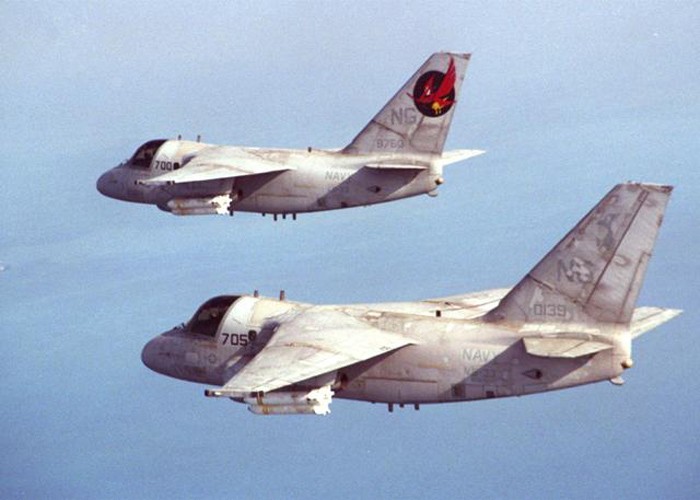S-3 Viking

Wing span: 69 feet
Length: 53 feet
Height: 23 feet
Weight: empty: 26,500 pounds
maximum takeoff: 52,539 pounds
Speed: 518 mph
Ceiling: 40,000 feet
Range: more than 2,300 nautical miles
Power plant: two GE TF34-GE-2 turbofan engines
Crew: four
Contractor: Lockheed
The VSX program (S-3) started in 1968, and, in 1969, Lockheed was awarded the contract to develop the Navy's new carrier-based, fan-powered ASW aircraft. It was designed to incorporate the latest concepts in sensors and in computer-based data processing, display and weapons control systems, and in enabling the four-man crew to effectively deal with the anticipated submarine threat. The S-3 Viking replaced the old reciprocating-engine-powered S-2 Tracker.
The S-3 Viking has all four crew members seated on ejection seats. The pilot's controls include a control stick in place of the traditional wheel. The slightly swept wing and General Electric TF-34 fan engines provide the S-3A with long-range or on-station endurance at cruise speeds and altitudes typical of subsonic jet aircraft. Inflight refueling through a retractable refueling probe can be used to further extend its mission performance. Folding wings and vertical tail provide carrier handling flexibility.
The S-3A airframe has been adapted to other roles--a characteristic for which its S-2 predecessor has long been noted. The improved S-3B version incorporates improved technology for increased radar detection range and classification, advanced acoustic processing, and support measures, and has Harpoon missile capability.
With its APS-137 Inverse Synthetic Aperture Radar (ISAR), ALR-67 Electronic Surveillance Measures (ESM) system and Harpoon missile capability, the Viking plays a critical surveillance, reconnaissance and targeting role in maintaining the sea control picture for naval and joint forces. Additionally, with the retirement of the A-6, the Viking has become the principal organic tanking platform for the battlegroup and a mainstay in offensive mining. It also contributes to Antisubmarine Warfare (ASW), especially in the littoral regions.
Upgrades to the radar, mission computer, communications and navigation suite will support organic reconnaissance capabilities in the littoral regions. Added to the planned airframe structural enhancements, these upgrades will curb obsolescence and ensure an adequate inventory of this essential platform well into the next century.


